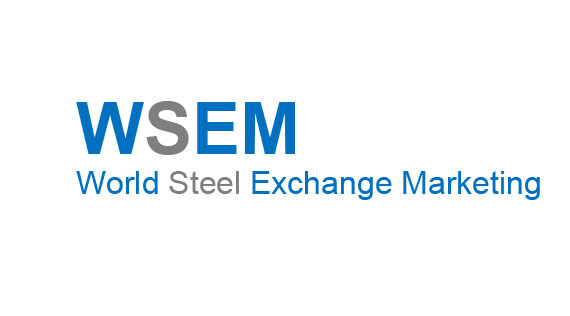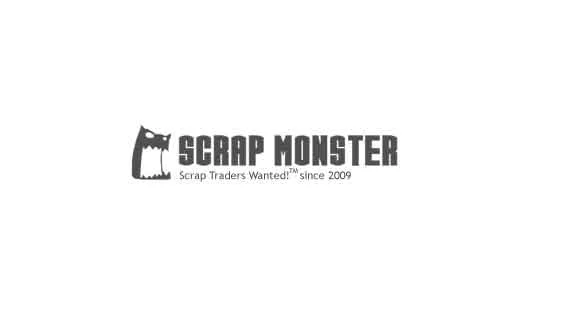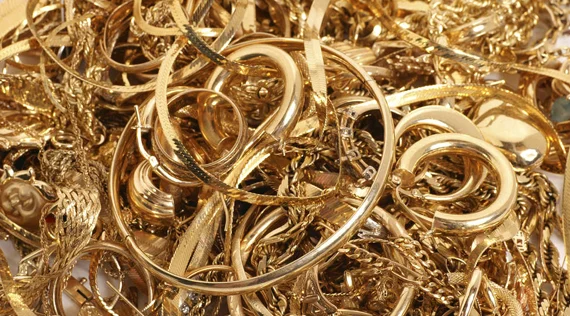Dealers are trying to ship their ferrous scrap orders before Friday arrives, as they face almost certain cancellations of this month’s undelivered orders. The cancellations will follow the steep slide in export prices. These have fallen byalmost $40 per tonne since March 10th and are seen by many as an indicator that prices will be lower in April.
Export prices recovered a few dollars per tonne in deals done this week, but are still well below the prevailing domestic market prices. One U.S. trader said he was not surprised by the steep drop in the export prices. He said some bulk cargo shippers, because they must amass such large inventories of 40,000 tonnes or more for their deals, tend to be more bearish about the market when they fail to make a deal within a certain time frame. “If they don’t make a sale,” he said, “they believe the prices will only get worse.”
The sales this week have set the 80/20 heavy melt price at $265 per tonne delivered to a Turkish port. That’s up about $5 per tonne from Friday. Still, most dealers believe the docks will lower their offers for heavy melt in the coming weeks as they gather scrap for these new shipments. They have cut their offers to as low as $210 per ton for export heavy melt to maintain adequate profit margins. One Eastern dealer said he doubts they will drop below $200 per ton because that would reduce much of their local supply.
Eastern shredders have made early April deals at down $30 per ton.
That likelihood of lower offers from the docks has persuaded Eastern shredders to look elsewhere for homes for their scrap. Sources said some have offered shredded scrap to mills in Ohio this week at $300 per gross ton delivered to the mill. That is off by about $30 per ton from what these mills paid earlier this month. But even with the added rail freight costs from the coast, those prices are still significantly higher than they are likely to see from the exporters and EAF mills in the East.
Where prices will settle probably won’t be determined until next week, yet these early deals could provide mills with leverage in dealing with their local scrap dealers and minimize potential supply shortfalls in the Midwest. Several traders said the Ohio mills and others in the Midwest may be reaching out early because deliveries of shredded and other obsolete grades like plate & structural scrap are slower than many anticipated because the flows into dealers’ yards are down.
Dealers aren’t the only processors short scrap at this point. A Chicago area broker said he visited two mill-owned shredders this week and both had little inventory of shredded scrap and feedstock. Both told him they were shredding material as it arrived, he said, and there were no trucks lined up at their scales waiting to unload.
The mills and some of the mill-owned brokers are trying to paint a bleak picture of demand next month, he said, but added that he wasn’t sure that dealers believe it. Many have little or no inventory in their yards because they have been trying to finish all their shipments and limit the cancellations expected at the end of this week. “If these guys are late with their shipments,” he said, “it’s because the scrap is not available.”
Several dealers said they have been working to ship as much scrap as possible, but will not be able to fill all the orders they took this month. The cancellations will mean a loss of some revenue, said a Detroit area dealer, but since he doesn’t have the material to ship, it isn’t a real loss, just a lost opportunity.
Another Midwest trader pointed to reasons for these supply shortfalls. After obsolete prices rose by $40 per ton, he said, dealers were anxious to sell as much scrap as they could this month. Busheling and bundles climbed even higher, by $60 per ton, but most recognize that the supply of industrial scrap is fixed by the output of the auto stampers and other metals manufacturers.
In general, if dealers want to process and sell more tons, he said, they must raise their feedstock prices. Encouraged by the higher prices they were seeing, dealers raised their scale prices and were confident that they would see more material coming through their gates, and they, in turn, offered more tons to the mills. Dealers call this “selling paper” since they don’t have the metal in their yards. At least they didn’t when they were making these bold offers several weeks ago.
At the same time, however, much of the obsolete scrap reservoir has not been replenished this winter– i.e.,there is not as much scrap available as there usually is this time of year. Colder temperatures and snowstorms typically interrupt scrap flows into dealers’ yards in January and February and dealers are accustomed to seeing a flood of obsolete scrap coming into their yards in late March and April. This year, though, weather in the Midwest has been mild with no major snowfalls. Smaller scrap dealers and auto wreckers have been selling steadily during the past two or three months. Thus, there is not as much of the spring thaw scrap that many expected to see by now.
Obsolete scrap prices could be off by $20 per ton, industrial grades by $10.
Because of the lack of export sales, an Eastern trader said he expects to see a softer domestic market in April. He is reluctant to pin a number on the likely price declines, but said many are expecting obsolete scrap prices to drop by about $20 per ton and to see a sympathetic decline of about $10 or less per ton in the busheling and bundles.
The export declines have created a lot more uncertainty in the market, he added. Also, there is more scrap available to the Turkish mills in Europe, and at lower prices. The U.S. economy is stronger and the steel industry here is doing much better than it is in Europe. He expects that most of the East Coast exporters and bigger coastal yards will sell more of their shredded and plate & structural scrap into the U.S. market in April.
Another Pennsylvania-based broker said he expects the ferrous scrap market will be a "mixed picture” next month. Export is weaker, he said, yet domestic mill demand is still robust. Many of the EAF-based flat-rolled mills are clamoring for more industrial scrap. Mill buyers and brokers must scour the country for added supplies and look for more industrial scrap in distant regions.
One consequence is that it now takes more time to complete the mills’ buys each month, he said. If a mill is only relying on local scrap yards, he explained then it may not be much of a problem. If they are buying more from distant suppliers then that creates problems in terms of getting the scrap delivered promptly and making certain it meets the mills’ specs.
Demand for the industrial steel scrap is strong at the EAF-based flat-rolled mills and steelmakers supplying the oil country. If mills try to slash those prices drastically, dealers may look for higher offers from rival mills elsewhere in the country or simply hold that scrap off the market much as they did in February. The result was competition for busheling and bundles that was intense at the beginning of March. EAF-based sheet producers were outbidding each other for local industrial scrap and in the North for additional supplies. Prices climbed to as high as $340 F.O.B. a barge or a railcar at dealers’ yards in the upper Midwest and $375 per ton delivered to the mill.
Most of the mills making higher quality steels have fewer choices today for quality raw material other than prime industrial scrap. They normally use imported pig iron and direct-reduced iron to dilute the residual elements like copper in scrap and meet the required chemical specs if they are using more shredded or other obsolete scrap. But supplies of imported pig iron are limited. Brazil and Russia are the main suppliers. Little or no pig iron is exported from Ukraine these days because of the war there.
Steelmakers in other pig iron importing countries like Italy are competing with U.S. mills for this material. Most of the foreign ironmakers are sold out through June. Prices for the next shipments are expected to be more than $400 per tonne delivered to the port of New Orleans. Iron traders typically add another $40 or $50 per tonne to that price to bring the iron upriver by barge and trucks to mills in the upper Midwest.
Production resumed at Nucor Corp.’s DRI plant in Convent, LA, in mid-March, but it is unclear whether the output from the plant, which was taken down in February for repairs, will be enough to offset much of the steelmaker’s industrial scrap needs.
Domestic steel output dipped for the second week in a row, according to the American Iron and Steel Institute. Raw steel production was 1,725,000 net tons last week while the capability utilization rate was 72.8%. That is down 1.3% from the 1,747,000 tons produced the prior week.
Shredded Scrap Thermometer: Clouds in shredder’s crystal ball.
There are differing reports on the availability of shredded scrap next month. Several brokers and dealers in the Midwest said there is little or no excess in dealers’ yards now. Most have been shredding and shipping as much as possible in the past two weeks because they fear the price will be lower next month and that all their undelivered orders will be canceled this week. Others report that the exporters and coastal shredders, unhappy with the lower offers overseas, may flood the domestic market with their shredded in April. The consequences of either scenario are not pretty.
• A steeper than expected decline in shredded prices usually produces a matching cut in the scale prices at dealers’ yards. Some suppliers will continue to sell for another week or two fearing additional cuts may be forthcoming. Eventually, the feedstock flow begins to dry up and dealers have less scrap to sell.
• One hurdle Midwest mills face when buying from the East Coast and other distant suppliers is the transport lag. If they don’t have their own railcars or a brokers’ cars, they must depend on the railroads to supply the needed gondola cars. Many of these are already filled with shredded bought earlier this month and sitting on sidings at some mills waiting to be unloaded. That means fewer cars in the railroad’s already thin pool of gons.
• Mills that are anticipating a spring flood of obsolete scrap in April may be disappointed. The higher prices paid for scrap this month and the mild winter weather has kept a steady flow into shredder yards throughout the winter and thus any uptick in supply may be limited.
Even if shredded scrap prices drop more than expected, U.S. mills still have alternate supply pipelines to tap. These wild cards include:
• Western Europe’s shredders. Prices offered in the U.S. are still higher than the current offers from Turkish mills even considering the higher freight costs. And shredded scrap is easily loaded and shipped overseas as bulk cargoes.
• Higher prices do bring out more obsolete scrap. Several years ago, when export demand was very strong, flat-bed trucks loaded with car bodies and trucks carrying mixed loads of feedstock from smaller scrap yards were lined up for several hours at coastal and export yards waiting to unload.





 Member
Member